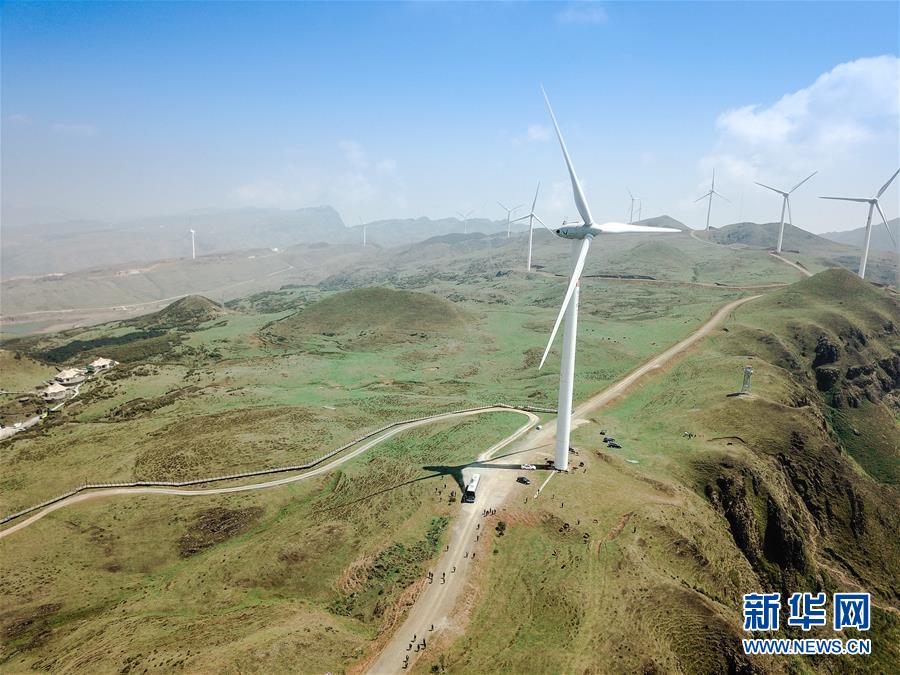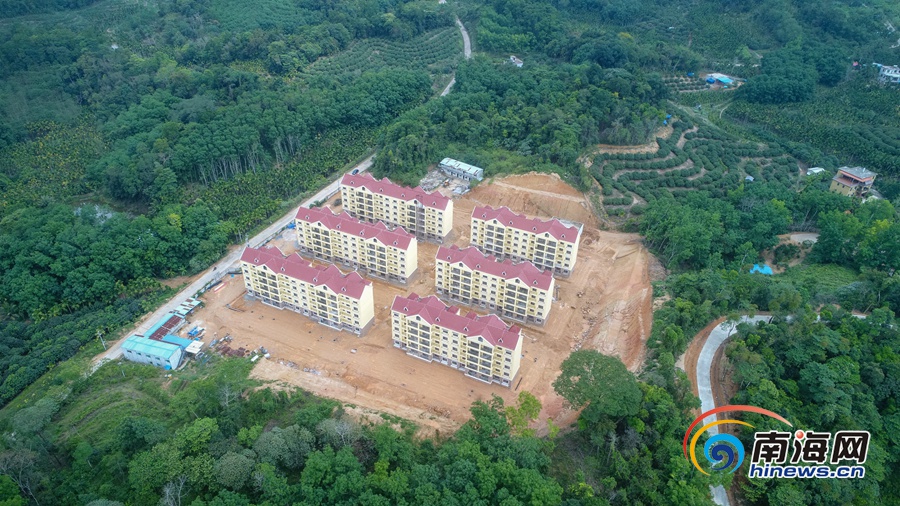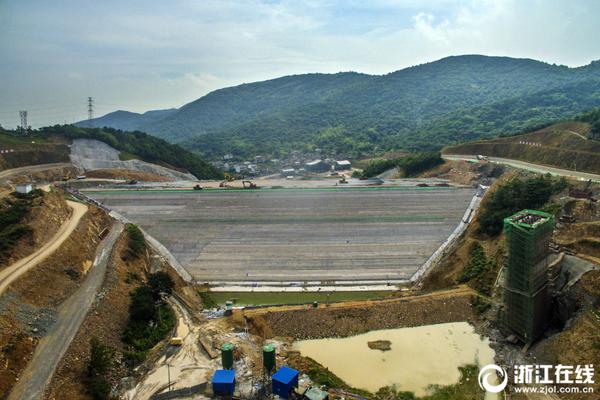
Flexible manufacturing system refers to some equipment connected by a transmission system. The transmission device puts the workpiece on other connection devices and sends it to various processing equipment, so that the workpiece processing is accurate, rapid and automated. The flexible manufacturing system has a central computer-controlled machine tool and transmission system, and sometimes several different parts can be processed at the same time.
Flexible manufacturing system is an automated machinery manufacturing system composed of a unified information control system, a material storage and transportation system and a set of digitally controlled processing equipment, which can adapt to the transformation of processing objects, abbreviated as FMS.
The flexible manufacturing system is unified byIt is composed of an information control system, a material storage and transportation system and a set of digitally controlled processing equipment. It is an automated machinery manufacturing system that can adapt to the transformation of processing objects, that is, Flexible Manufacturing System, abbreviated as FMS.
The flexible manufacturing system is composed of a unified information control system, a material storage and transportation system and a set of digitally controlled processing equipment. It is an automated machinery manufacturing system that can adapt to the transformation of processing objects (Flexible Manufacturing System), English abbreviation For FMS.
Flexible Manufacturing System (FMS) is an automated manufacturing system controlled by a central computer.It is some automatic processing equipment (usually CNC machine tools and machining centers with tool changing devices) connected by a transmission system.
An automated manufacturing system composed of CNC processing equipment, material transportation and storage devices and computer control systems. It includes multiple flexible manufacturing units, which can be quickly adjusted according to changes in manufacturing tasks or production environment, and is suitable for multi-variety, small and medium-sized mass production.
Advantages of Flexible Manufacturing System Editing Advantages of Flexible Manufacturing System: Flexible Manufacturing System is a technically complex and highly automated system, which will microelectronics, computer and The organic combination of system engineering and other technologies has ideally and successfully solved the contradiction between high automation and high flexibility of machinery manufacturing.
High equipment utilization rate. After a set of machine tools are compiled into a flexible manufacturing system, the output is several times higher than that of this set of machine tools when it is distributed single machine operation. The product is reduced by about 80%. The production capacity is relatively stable.
The flexible manufacturing system has a wide range of adaptations. As shown in Figure 2, if the parts production batch is large and the number of varieties is small, special machine tool lines or automatic production lines can be used; if the parts production volume is small and there are many varieties, it is suitable to use CNC machine tools or general machine tools; in the middle of the two, both are It is suitable for processing with flexible manufacturing systems.
The main advantages of flexible manufacturing systems are as follows. ( 1) It has a high degree of flexibility. Fms can realize the processing of different products with certain similarities, adapt to the rapid changes in market demand and process requirements, and meet the requirements of multi-variety, small and medium-sized mass production.
It can be quickly adjusted according to changes in manufacturing tasks or production environment, which is suitable for multi-variety, small and medium-sized mass production. Flexible manufacturing system is an automated production and manufacturing system that can produce any range of products with the least human intervention. The flexibility of the system is usually limited by the product families considered in the system design.
There are many advantages of adopting a flexible manufacturing system, mainly in the following aspects: the equipment utilization rate is high, and the output of a set of machine tools compiled into a flexible manufacturing system can generally reach three times that of this set of machine tools when operating alone.
Flexible manufacturing hardware systemThe flexible manufacturing system is composed of a unified information control system, a material storage and transportation system and a set of digitally controlled processing equipment. It is an automated machinery manufacturing system (Flexible Manufacturing System), abbreviated as FMS, which can adapt to the transformation of processing objects.
The equipment used in the flexible manufacturing system of the machining system is determined by the category of the workpiece to be processed, mainly including machining centers, turning centers or computer numerical control (CNC) turning, milling, grinding and gear processing machine tools, etc., which are used to automatically complete the processing of a variety of processes.
The flexible manufacturing unit is composed of multiple mechanical equipment, automation systems and control systems, which can complete the processing and assembly tasks of multiple processes. It adopts advanced control technology and computer software to realize the automation, intelligence and flexibility of the production process.

1. The central computer controls the machine tool and transmission system, and the flexible manufacturing system can sometimes process several different parts at the same time.
2. Generally speaking, flexible manufacturing means that a production line can realize the production of multiple varieties of products.In fact, the model of flexible manufacturing exists widely, such as customization, which is the traditional large-scale mass production mode, which is consumer-oriented and needs to determine production.
3. The main disadvantages of the flexible manufacturing system are as follows: (1) the system investment is large and the investment recovery period is long; (2) the system structure is complex and the requirements for operators are high; (3) the complex structure reduces the reliability of the system. Flexible manufacturing technology is an automated technology suitable for multi-variety and small and medium-sized mass production.
The composition of flexible manufacturing system is shown in Figure 4, which consists of three parts: material system, energy system and information system, and each system is composed of many subsystems.
The flexible manufacturing system is composed of a unified information control system, a material storage and transportation system and a set of digitally controlled processing equipment. It is an automated machinery manufacturing system (Flexible Manufacturing System) that can adapt to the transformation of processing objects. It is written as FMS.
Flexible Manufacturing Unit (FMC) Flexible Manufacturing Unit is a unit developed on the basis of a manufacturing unit with some characteristics of a flexible manufacturing system.
Storage and handling: The materials handled by the storage and handling system include blanks, workpieces, tools, fixtures, inspection tools and chips, etc.; the methods of storing materials include flat pallet warehouses and truss-type three-dimensional warehouses with large storage capacity.
Type of flexible manufacturing system: flexible manufacturing unit.A flexible manufacturing unit is a processing unit composed of one or several CNC machine tools or machining centers. The unit can automatically replace tools and fixtures and process different workpieces as needed.
And China's national military standard is defined as "flexible manufacturing system is an automated manufacturing system composed of CNC processing equipment, material transportation and storage device and computer control system. It includes multiple flexible manufacturing units, which can be quickly adjusted according to changes in manufacturing tasks or production environment, and is suitable for multi-product Seed, small and medium-sized mass production.
1. Mechatronics integration is a composite technology that studies the addition or integration of information processing and control functions of electronic devices into machinery and devices.
2. Mechatronics is a composite technology that attaches or integrates the information processing and control functions of electronic devices into mechanical devices.
3. Flexible automation is a combination of mechanical technology and electronic technology, that is, a new generation of automation of mechatronics integration. Its processing procedures are flexible and variable, also known as variable programming automation. Introduction: Flexible automation, which originated in the 1950s, is an automation that combines mechanical technology and electronic technology.
4. Mechatronics, also known as mechanical and electronic engineering, is a kind of mechanical engineering and automation. In English, it is called Mechatronics, which is a combination of the first half of English Mechanics and the second half of Electronics.
5. Mechatronics technology is a combination of applied mechanical technology and electronic technology.
UK HS code duty optimization-APP, download it now, new users will receive a novice gift pack.
Flexible manufacturing system refers to some equipment connected by a transmission system. The transmission device puts the workpiece on other connection devices and sends it to various processing equipment, so that the workpiece processing is accurate, rapid and automated. The flexible manufacturing system has a central computer-controlled machine tool and transmission system, and sometimes several different parts can be processed at the same time.
Flexible manufacturing system is an automated machinery manufacturing system composed of a unified information control system, a material storage and transportation system and a set of digitally controlled processing equipment, which can adapt to the transformation of processing objects, abbreviated as FMS.
The flexible manufacturing system is unified byIt is composed of an information control system, a material storage and transportation system and a set of digitally controlled processing equipment. It is an automated machinery manufacturing system that can adapt to the transformation of processing objects, that is, Flexible Manufacturing System, abbreviated as FMS.
The flexible manufacturing system is composed of a unified information control system, a material storage and transportation system and a set of digitally controlled processing equipment. It is an automated machinery manufacturing system that can adapt to the transformation of processing objects (Flexible Manufacturing System), English abbreviation For FMS.
Flexible Manufacturing System (FMS) is an automated manufacturing system controlled by a central computer.It is some automatic processing equipment (usually CNC machine tools and machining centers with tool changing devices) connected by a transmission system.
An automated manufacturing system composed of CNC processing equipment, material transportation and storage devices and computer control systems. It includes multiple flexible manufacturing units, which can be quickly adjusted according to changes in manufacturing tasks or production environment, and is suitable for multi-variety, small and medium-sized mass production.
Advantages of Flexible Manufacturing System Editing Advantages of Flexible Manufacturing System: Flexible Manufacturing System is a technically complex and highly automated system, which will microelectronics, computer and The organic combination of system engineering and other technologies has ideally and successfully solved the contradiction between high automation and high flexibility of machinery manufacturing.
High equipment utilization rate. After a set of machine tools are compiled into a flexible manufacturing system, the output is several times higher than that of this set of machine tools when it is distributed single machine operation. The product is reduced by about 80%. The production capacity is relatively stable.
The flexible manufacturing system has a wide range of adaptations. As shown in Figure 2, if the parts production batch is large and the number of varieties is small, special machine tool lines or automatic production lines can be used; if the parts production volume is small and there are many varieties, it is suitable to use CNC machine tools or general machine tools; in the middle of the two, both are It is suitable for processing with flexible manufacturing systems.
The main advantages of flexible manufacturing systems are as follows. ( 1) It has a high degree of flexibility. Fms can realize the processing of different products with certain similarities, adapt to the rapid changes in market demand and process requirements, and meet the requirements of multi-variety, small and medium-sized mass production.
It can be quickly adjusted according to changes in manufacturing tasks or production environment, which is suitable for multi-variety, small and medium-sized mass production. Flexible manufacturing system is an automated production and manufacturing system that can produce any range of products with the least human intervention. The flexibility of the system is usually limited by the product families considered in the system design.
There are many advantages of adopting a flexible manufacturing system, mainly in the following aspects: the equipment utilization rate is high, and the output of a set of machine tools compiled into a flexible manufacturing system can generally reach three times that of this set of machine tools when operating alone.
Flexible manufacturing hardware systemThe flexible manufacturing system is composed of a unified information control system, a material storage and transportation system and a set of digitally controlled processing equipment. It is an automated machinery manufacturing system (Flexible Manufacturing System), abbreviated as FMS, which can adapt to the transformation of processing objects.
The equipment used in the flexible manufacturing system of the machining system is determined by the category of the workpiece to be processed, mainly including machining centers, turning centers or computer numerical control (CNC) turning, milling, grinding and gear processing machine tools, etc., which are used to automatically complete the processing of a variety of processes.
The flexible manufacturing unit is composed of multiple mechanical equipment, automation systems and control systems, which can complete the processing and assembly tasks of multiple processes. It adopts advanced control technology and computer software to realize the automation, intelligence and flexibility of the production process.

1. The central computer controls the machine tool and transmission system, and the flexible manufacturing system can sometimes process several different parts at the same time.
2. Generally speaking, flexible manufacturing means that a production line can realize the production of multiple varieties of products.In fact, the model of flexible manufacturing exists widely, such as customization, which is the traditional large-scale mass production mode, which is consumer-oriented and needs to determine production.
3. The main disadvantages of the flexible manufacturing system are as follows: (1) the system investment is large and the investment recovery period is long; (2) the system structure is complex and the requirements for operators are high; (3) the complex structure reduces the reliability of the system. Flexible manufacturing technology is an automated technology suitable for multi-variety and small and medium-sized mass production.
The composition of flexible manufacturing system is shown in Figure 4, which consists of three parts: material system, energy system and information system, and each system is composed of many subsystems.
The flexible manufacturing system is composed of a unified information control system, a material storage and transportation system and a set of digitally controlled processing equipment. It is an automated machinery manufacturing system (Flexible Manufacturing System) that can adapt to the transformation of processing objects. It is written as FMS.
Flexible Manufacturing Unit (FMC) Flexible Manufacturing Unit is a unit developed on the basis of a manufacturing unit with some characteristics of a flexible manufacturing system.
Storage and handling: The materials handled by the storage and handling system include blanks, workpieces, tools, fixtures, inspection tools and chips, etc.; the methods of storing materials include flat pallet warehouses and truss-type three-dimensional warehouses with large storage capacity.
Type of flexible manufacturing system: flexible manufacturing unit.A flexible manufacturing unit is a processing unit composed of one or several CNC machine tools or machining centers. The unit can automatically replace tools and fixtures and process different workpieces as needed.
And China's national military standard is defined as "flexible manufacturing system is an automated manufacturing system composed of CNC processing equipment, material transportation and storage device and computer control system. It includes multiple flexible manufacturing units, which can be quickly adjusted according to changes in manufacturing tasks or production environment, and is suitable for multi-product Seed, small and medium-sized mass production.
1. Mechatronics integration is a composite technology that studies the addition or integration of information processing and control functions of electronic devices into machinery and devices.
2. Mechatronics is a composite technology that attaches or integrates the information processing and control functions of electronic devices into mechanical devices.
3. Flexible automation is a combination of mechanical technology and electronic technology, that is, a new generation of automation of mechatronics integration. Its processing procedures are flexible and variable, also known as variable programming automation. Introduction: Flexible automation, which originated in the 1950s, is an automation that combines mechanical technology and electronic technology.
4. Mechatronics, also known as mechanical and electronic engineering, is a kind of mechanical engineering and automation. In English, it is called Mechatronics, which is a combination of the first half of English Mechanics and the second half of Electronics.
5. Mechatronics technology is a combination of applied mechanical technology and electronic technology.
How to find reliable global suppliers
author: 2024-12-23 23:25US-China trade data comparisons
author: 2024-12-23 23:23Cross-border HS code harmonization
author: 2024-12-23 23:21HS code-driven export incentives
author: 2024-12-23 21:39How to integrate HS codes in ERP
author: 2024-12-23 21:37HS code integration with audit trails
author: 2024-12-23 23:35Wine and spirits HS code verification
author: 2024-12-23 23:34HS code-driven risk management frameworks
author: 2024-12-23 23:17Country of import HS code variations
author: 2024-12-23 23:10Trade data analysis for small businesses
author: 2024-12-23 21:56 Agriculture trade data intelligence
Agriculture trade data intelligence
364.19MB
Check Trade data for strategic sourcing
Trade data for strategic sourcing
821.23MB
Check Real-time import duties calculator
Real-time import duties calculator
433.43MB
Check Dynamic customs duty calculation
Dynamic customs duty calculation
951.13MB
Check Refined sugar HS code identification
Refined sugar HS code identification
356.45MB
Check Pharma R&D materials HS code verification
Pharma R&D materials HS code verification
581.89MB
Check HS code segmentation for retail imports
HS code segmentation for retail imports
992.42MB
Check Refrigeration equipment HS code checks
Refrigeration equipment HS code checks
671.44MB
Check Predictive models for trade demand
Predictive models for trade demand
612.47MB
Check Trade intelligence for industrial equipment
Trade intelligence for industrial equipment
287.15MB
Check Steel industry trade insights
Steel industry trade insights
427.56MB
Check Trade data-driven market penetration
Trade data-driven market penetration
143.83MB
Check Agriculture import export insights
Agriculture import export insights
935.82MB
Check Comparative trade route analysis
Comparative trade route analysis
425.35MB
Check China trade data analysis tools
China trade data analysis tools
392.76MB
Check HS code segmentation for industrial chemicals
HS code segmentation for industrial chemicals
786.96MB
Check Industry-specific trade tariff analysis
Industry-specific trade tariff analysis
892.74MB
Check Trade data-driven cost modeling
Trade data-driven cost modeling
645.42MB
Check Livestock feed HS code references
Livestock feed HS code references
147.99MB
Check Global trade e-commerce insights
Global trade e-commerce insights
184.26MB
Check Industry-specific HS code database
Industry-specific HS code database
573.38MB
Check Global trade documentation standards
Global trade documentation standards
694.66MB
Check FMCG sector HS code analysis
FMCG sector HS code analysis
983.37MB
Check Aggregated global trade insights dashboard
Aggregated global trade insights dashboard
547.67MB
Check Optimizing distribution using HS code data
Optimizing distribution using HS code data
373.22MB
Check China trade data analysis tools
China trade data analysis tools
855.84MB
Check Regional value content by HS code
Regional value content by HS code
175.69MB
Check How to leverage customs rulings data
How to leverage customs rulings data
392.23MB
Check Global trade documentation standards
Global trade documentation standards
691.95MB
Check Marine exports HS code insights
Marine exports HS code insights
387.24MB
Check Rare earth minerals HS code classification
Rare earth minerals HS code classification
811.42MB
Check How to manage cross-border complexity
How to manage cross-border complexity
299.73MB
Check Predictive trade route realignment
Predictive trade route realignment
232.61MB
Check Integrating HS codes in export marketing
Integrating HS codes in export marketing
247.78MB
Check End-to-end global supply chain solutions
End-to-end global supply chain solutions
997.39MB
Check Asia trade corridors HS code mapping
Asia trade corridors HS code mapping
994.13MB
Check
Scan to install
UK HS code duty optimization to discover more
Netizen comments More
449 Import risk analysis metrics
2024-12-24 00:05 recommend
2239 Trade data-driven portfolio management
2024-12-23 23:59 recommend
2779 HS code-based quota management
2024-12-23 23:30 recommend
782 How to interpret trade statistics
2024-12-23 22:21 recommend
1677 HS code-driven portfolio diversification
2024-12-23 21:55 recommend